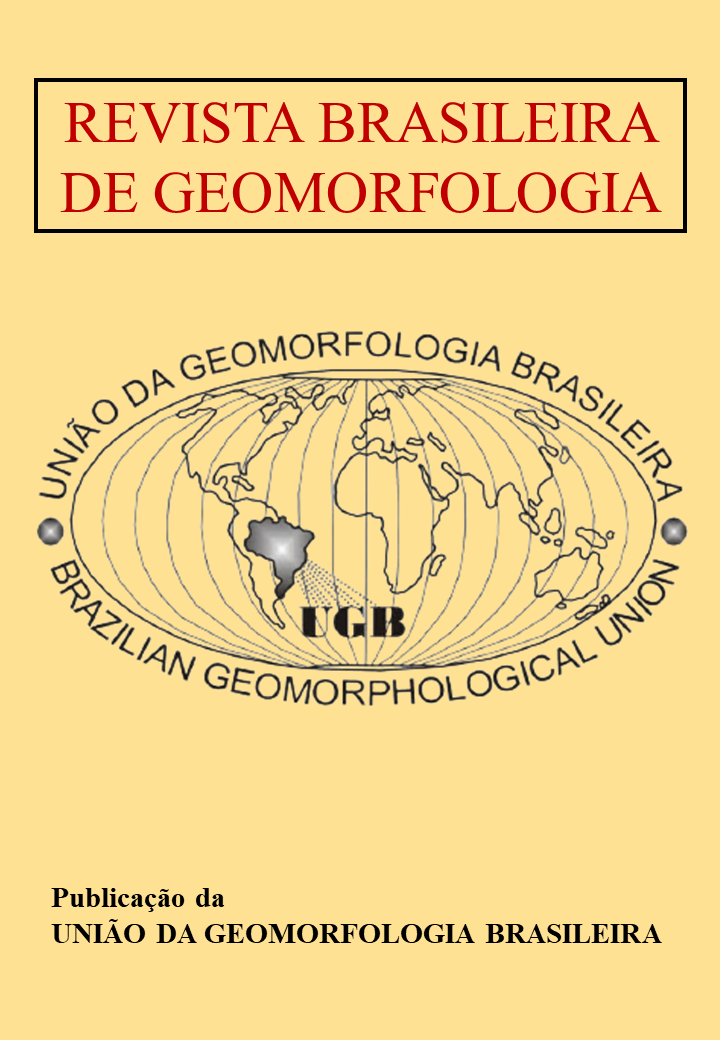River geometry responses resulting from hydrological changes in a partially urbanized watershed: an experimental study in Southern Brazil
DOI:
https://doi.org/10.20502/rbg.v26i3.2643Palabras clave:
Fluvial morphometry, Urban rivers, Impervious, Hydraulic geometryResumen
: Impervious surfaces resulting from urbanization can increase peak flow magnitudes and affect the physical integrity of rivers, leading to alterations in channel morphometric parameters. This study investigates the relationship between cross-sectional morphometry and both drainage area size and the proportion of impervious surfaces. Ten cross-sections were analyzed within the Maringá Stream watershed, located in southern Brazil. This watershed, the largest in the municipality of Maringá (~90 km²), encompasses both urban and rural drainage areas. Morphometric parameters were obtained through field surveys, and geoprocessing techniques were employed to quantify drainage area size and impervious surface ratio. Significant univariate relationships were identified only between the width-to-depth ratio and depth, respectively, with drainage area size and impervious surface ratio. Multiple regression analysis demonstrated that width, channel capacity, and hydraulic radius had statistically significant coefficients with both explanatory variables. The findings suggest that the impervious surface ratio strongly influences fluvial morphometry, although hydraulic geometry is primarily governed by the combined effects of urbanization and drainage area size.
Descargas
Descargas
Publicado
Cómo citar
Número
Sección
Licencia

Esta obra está bajo una licencia internacional Creative Commons Atribución-NoComercial 4.0.
Autor(es) conservam os direitos de autor e concedem à revista o direito de primeira publicação, com o trabalho simultaneamente licenciado sob a Licença Creative Commons Attribution que permite a partilha do trabalho com reconhecimento da autoria e publicação inicial nesta revista.









